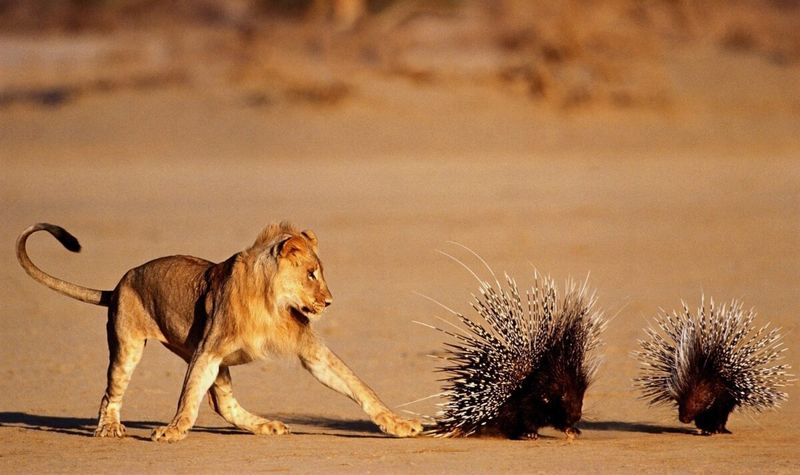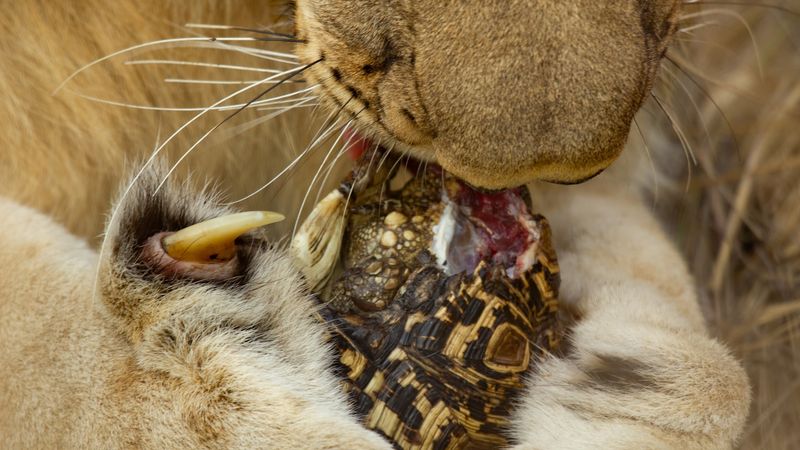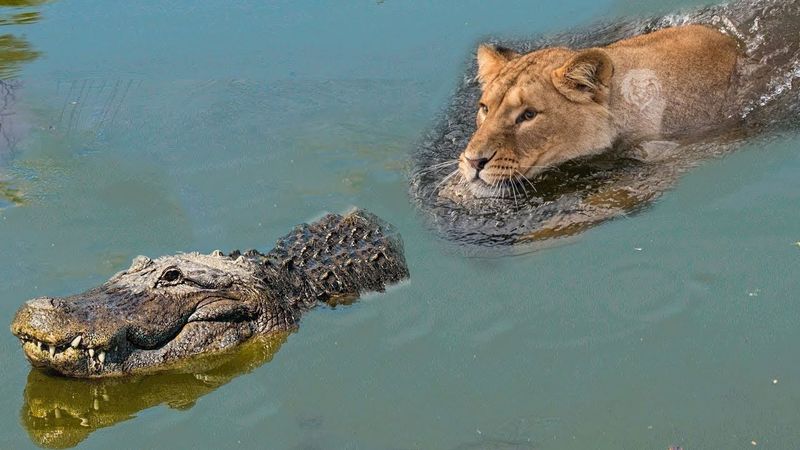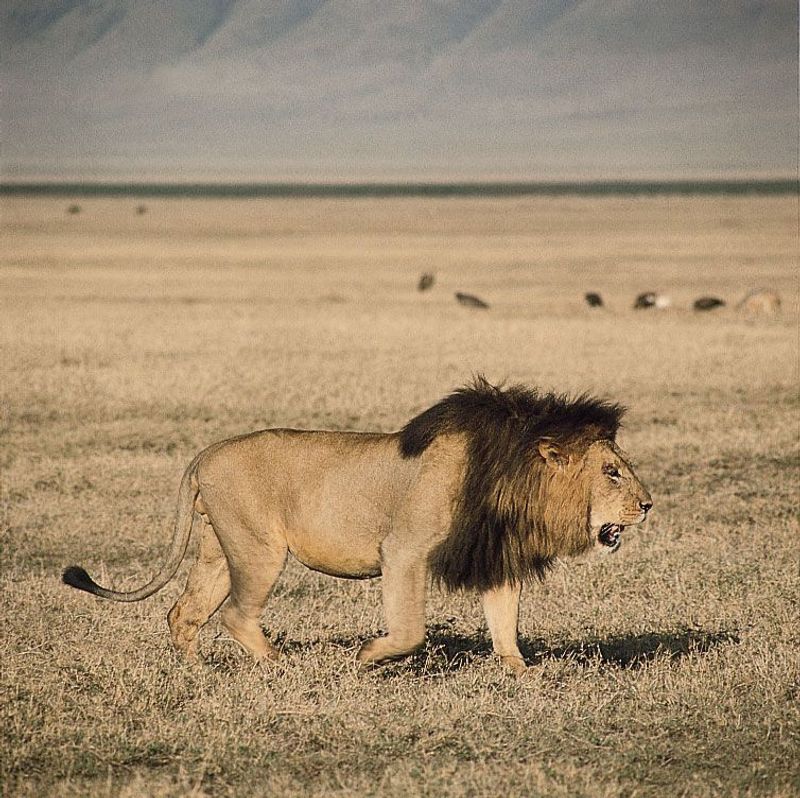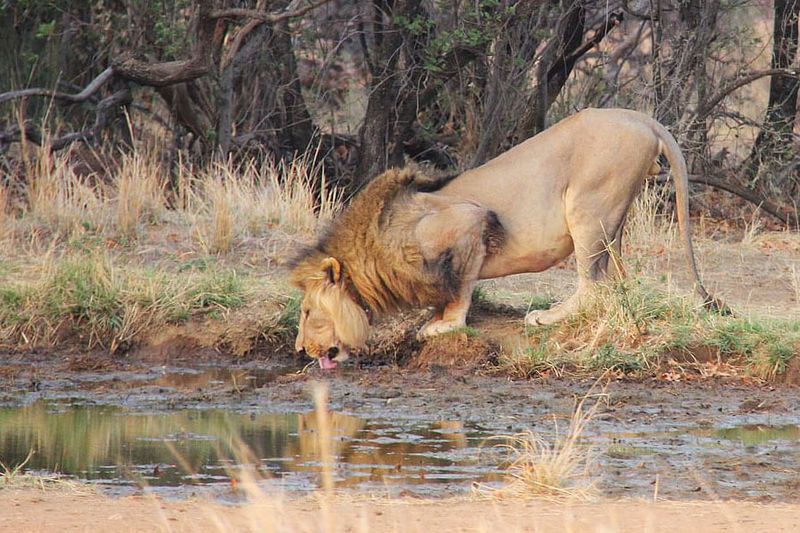📖 Table of Content:
In the heart of the African wilderness, lions reign as apex predators—powerful, social, and finely tuned for stalking large ungulates like zebras, wildebeests, and buffalo. Their hunting habits have long fascinated wildlife biologists and safari-goers alike, giving rise to a commonly held perception that lions are picky, high-ranking carnivores that feed only on prestigious prey. But this image softens considerably when survival is at stake.
During times of environmental stress—such as prolonged droughts, prey scarcity, or intense competition with rival predators—lions become far less choosy. These circumstances push them to test their adaptability and occasionally to step outside their usual dietary comfort zones. The result is a list of prey that is as surprising as it is revealing, showing the lengths to which nature’s top hunters will go when forced to improvise.
This article explores seven unexpected prey items that lions have been known to consume when faced with survival pressures. These examples, ranging from the perilous to the bizarre, provide a richer picture of lion behavior in the wild. Some are well-documented, others rare, but each instance serves as a testament to the lion’s adaptability in Africa’s ever-changing landscapes.
1. Porcupines
Few predators willingly tangle with a porcupine, but lions have occasionally taken the risk when other prey options vanish. The porcupine’s sharp, barbed quills pose a serious threat, and lions that survive such encounters may carry injuries for life. In several regions, particularly in arid parts of southern Africa, lions have been observed attempting to flip porcupines over to access their unprotected underbellies. This technique suggests a level of problem-solving and desperation not often associated with routine lion behavior. Field researchers have documented several cases where lions succeeded but at a cost—many ended up with embedded quills that later caused infection. The danger of such a hunt highlights the extreme circumstances under which lions make this choice. It’s a clear indicator that in harsh environments, even dangerous prey becomes an option worth considering.
2. Tortoises
Unusual in both form and texture, tortoises are far from the typical lion’s menu, yet they sometimes end up on it. In dry seasons, especially when prey migrates or is thinned by drought, lions have been recorded breaking into tortoise shells to feed on the meat inside. The process often involves crushing the shell with powerful jaws or slamming the tortoise against hard surfaces. While tortoises don’t offer a large meal, they are easy to catch and completely defenseless once discovered. This behavior has been noted in parks like Kruger and Serengeti, offering a window into lion ingenuity under pressure. Lions’ ability to exploit such a low-risk food source reflects their capacity to adapt their hunting tactics. Though not frequent, these moments underscore how survival instincts drive even the mightiest predators to get creative.
3. Crocodiles
Occasionally, the hunters become bold enough to tackle rivals from a different ecological niche. Lions have been known to attack and kill young or small crocodiles, particularly when food is scarce and encounters occur near shared watering holes. These events are rare and carry significant risk, as crocodiles are formidable in both strength and defensive reflexes. In the Okavango Delta and similar regions, such incidents have been recorded, often with multiple lions involved in a coordinated effort. Typically, the attacks are opportunistic and involve separating juvenile crocodiles from the safety of water. The element of surprise is critical, as once a crocodile is submerged, a lion has little chance. While not a primary food source, crocodiles appear on the lion’s radar only when desperation outweighs danger.
4. Carrion From Unusual Sources
Tiny and elusive, rodents like field mice and gerbils are not a lion’s first—or tenth—choice in most situations. Yet in grasslands suffering from overgrazing or severe drought, lions may resort to catching and eating these miniature mammals. Unlike larger prey, rodents don’t require team hunting or stalking tactics, but they do demand patience and quick reflexes. Some anecdotal observations from researchers suggest lions may dig into burrows or pounce in open fields when larger prey is nowhere to be found. The nutritional payoff is minimal, but in the absence of better options, every calorie counts. It’s likely that younger or more desperate lions engage in this kind of foraging. These behaviors highlight an overlooked aspect of lion ecology—the capacity for small-scale hunting when the environment dictates it.
5. Fish
Strikingly, fish have made their way into the lion diet under exceptional circumstances, particularly during droughts. In river systems where water levels recede dramatically, fish often become trapped in shallow pools or mudflats. Lions, typically averse to water, have been observed pawing at these trapped fish and consuming them on the spot. Botswana’s Savuti Channel is one location where this phenomenon has been documented, surprising both scientists and tourists. This behavior doesn’t require the stealth or speed of terrestrial hunting, making it a relatively low-effort gain. Such moments show how lions can exploit new resources when familiar ones dry up. It’s another testament to the versatility of an apex predator in an unpredictable world.

